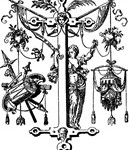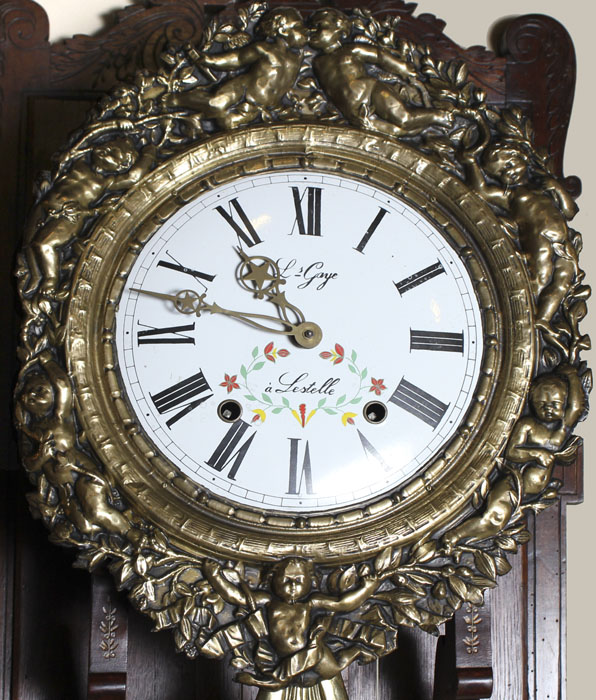 The French Antique Morbier clock is known as a provincial or Country French clock, distinguishing it from clocks made in Lyon, Beaune or Paris. The clock was named after the village of Morbier, located close to the Swiss border between Paris and Geneva. Morbier was a rural, agricultural (dairy) community in the Franche-Comté region, and remains famous for its Morbier cheese although the region is better known now as a ski resort.
The French Antique Morbier clock is known as a provincial or Country French clock, distinguishing it from clocks made in Lyon, Beaune or Paris. The clock was named after the village of Morbier, located close to the Swiss border between Paris and Geneva. Morbier was a rural, agricultural (dairy) community in the Franche-Comté region, and remains famous for its Morbier cheese although the region is better known now as a ski resort.
In the last half of the 1700s, farmers began to diversify, making clock parts during the winter months (while still making cheese in the summer…). These parts were bought by finishers, who would assemble the parts to create clocks. Becoming more elaborate and desirable over time, they were sold first to travellers, then were marketed elsewhere in France. Sadly, World War I put an end to the clockmaking enterprises of the region in 1914.
A religious tradition is inherent in their chiming mechanism which dates back to the 12th Century, when most clocks were built for churches. Townspeople relied on the clock’s chime to know when to pray, when to eat, when to go to bed, and more. The plates holding the gears together in Morbier clocks are miniature versions of those seen in the old church tower clocks. Since it is probable that the same clockmakers designed and built both, there are amazing similarities.
This intriguing clock is not a historical oddity, but a point in the evolution of the horloge that is of particular interest to collectors. Centuries ago, clocks were designed to mount on the wall. Only after the cases in which they were shipped became more and more decorative did the custom begin to leave the clocks in the case for a versatile display. This specimen marks a transition between the two end results, with a decorated wall mount and highly figured embossed bronze clockface surround and pendulum. The subjects indicate this was a wedding gift or a celebration of a birth, showing a stork carrying an infant in its beak. Exceedingly rare, it has been fully restored to working order and has a lilting chime. Circa 1830s. This clock is available for acquisition, along with many other exquisite clocks, in one of our showrooms or by logging on to www.inessa.com.








